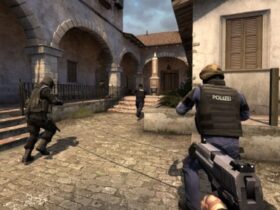The Valve Regional Standings are flawed. Deeply so. That’s not just my opinion – teams have been purposefully forfeiting matches to avoid losing points, open qualifiers are an absolute mess (especially given the chance of cheaters), and whether certain tournaments actually count towards these rankings seems to change on a whim. This leaves teams in the dark about whether the online event they’re prioritizing will actually matter in the long run.
Ultimately, esports is a business for these teams. The end goal is to reach big LANs, including the Majors, where sticker money can be the difference between life and death for some orgs. That means the messy VRS system needs to be spot-on, and right now, it isn’t. Nothing underlines this better than a recent open letter addressed to Valve, which was cosigned by 22 teams from Tier 1 down to Tier 3.
Will Valve change the VRS system?
In the letter to Valve, one of the biggest problems is noted as the lack of open qualifiers for smaller CS2 tournaments. Right now, without a Tier 1 core that gets invited to events, teams must brave open qualifiers to earn VRS points. That’s fine, in theory, but most TOs don’t run open qualifiers with thousands of teams due to the logistical problems of such an undertaking. The letter requests that Valve incentivizes tournaments organizers to host open qualifiers, so these teams are no longer in the lurch.

Credit: Valve
Part of this is bringing open qualifiers back for the Majors. Some of the biggest Cinderella stories from Majors in years gone by have come from open qualification, and removing that puts a big barrier in front of these smaller teams dreaming of a big-stage appearance. Without Major open qualifiers, we wouldn’t have had Into the Breach’s Quarter-Final run at the BLAST Paris Major 2023, for example.
The teams’ letter to Valve also addresses tournaments having VRS status added and removed mid-tournament, pointing out that “committing to the wrong tournament could result in a long stint in the dead zone.” This is obviously unsustainable, and we’re just going to see more Tier 2 and below teams dropping out until it’s addressed. Valve, as is its way, has been silent on the possibility of changes so far.
The reality is that something needs to change. Valve might accidentally kill the lower end of its own scene, and these changes need to be addressed before that happens. Personally, I think that teams applying pressure like this is exactly what’s needed. It may take a few more from the very top of the game for Valve to pay attention. It may even take some more Tier 2 teams going out of business, unfortunately. But change will come, or else it could sign the death warrant of professional CS as we know it.
You can see the full open letter to Valve addressed below:
“Dear Valve,
We all share your vision of “A Level Playing Field” — where every team and player has the opportunity to qualify for a Major based on skill alone. We appreciate your efforts to reshape the tournament landscape, but we believe the current system has significant flaws that are undermining this vision. As a collective, we offer this feedback to help strengthen the foundation you’ve built.
Open qualifiers: The Only Way to Enter the Scene is Through Tier 1
As it stands, if you have a core without VRS points, open qualifiers are the only way of getting points.
For tournament organizers (TOs), open qualifiers (OQs) are a major undertaking, simply due to scale. Running 512-1024 team brackets requires a sizable logistical and administrative workload to ensure competitive integrity meaning only the biggest TOs are able to organize these effectively. This creates a layered ecosystem: the biggest tournaments offer a small chance at a dream OQ run that catapults teams to relevance, while the tier below runs on invites only. Below that tier is a dead zone, where teams slowly run out of oxygen while waiting for the next tier 1 open qualifier.
As a result, any new up-and-coming team can only enter the ranking, paradoxically, through Tier1-events, and these are few and far between. Unless the ranking system changes, there must be stronger incentives for smaller TOs to run open qualifiers.
Backpedaling on Decisions
The status of a tournament’s VRS license needs to be settled before the tournament starts. We’re only one month into the year and multiple tournaments have had their VRS status revoked mid-tournament while others have had it added mid-tournament. This uncertainty has major implications for teams and players — due to how precarious the situation is in tier 2, committing to the wrong tournament could result in a long stint in the dead zone. From a team’s perspective it is crucial that these licenses are not given out on a whim.
Communication and Complexity:
Credit where credit is due — making the codebase open-source has given everyone the opportunity to fully grasp the inner workings of the ranking, allowing us to fully understand the effect of every single match.
However, the esports industry gathers people from all walks of life with a great variety in technical knowledge and work life experiences. Presenting this crucial information on a GitHub repository, written in a very technical way, negatively affects accessibility for smaller teams and players who lack the technical fluency to dissect the model.
If players cannot understand the steps needed to climb the ranking, or if a TO does not understand whether their tournament fulfills the license requirements, there needs to be a centralized forum/platform where questions are asked and answered. We understand that there is a cost to building and maintaining such a platform, and are open to working with a third party to do so. Currently, the scene is coping with the lack of clarity by sharing information in what has become a global game of telephone where, at times, teams are educating TOs on the current interpretation of the rules, mostly operating completely in the dark.
Valve, you made a bold decision to reshape the Counter-Strike ecosystem, but the system as it stands is not a level playing field. — to get there, you have to finish what you started. From your perspective this might just be a time period where you’re accepting flaws in the system until it irons itself out. To us, the teams, this time period could kill our Counter-Strike organizations.
To leave you with a short-term suggestion that would help us: add open qualifiers to the Major again. Allow all teams and players the chance to save their careers and dreams.”
The following 22 teams have signed the letter:
- Ninjas in Pyjamas
- Metizport
- Endpoint
- JANO
- ENCE
- MOUZ
- BIG
- HAVU
- EYEBALLERS
- Imperial
- Legacy
- Falcons
- OG Esports
- 3DMAX
- 9z
- FURIA
- M80
- Monte Esports
- Fnatic
- GamerLegion
- 9INE
- Aurora





Leave a Reply